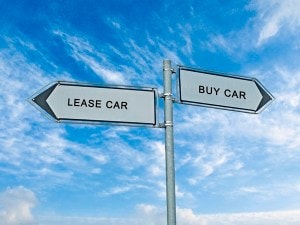In normal times, the question of leasing versus buying is best answered by your transportation needs. If you drive a lot of miles in a year, like to own rather than rent things, hope to one day not have a car payment and plan on keeping your car for a long time, then an outright purchase is the most cost-effective way. If you like having a new car every few years, don’t drive an excessive amount and are locked into always having a car payment, then leasing is an attractive option.
But as a result of coronavirus stay-at-home directives, that’s all changed. Working from home, even post-pandemic may become the new normal. If you don’t need to drive as much to work, then perhaps leasing deserves a second look.
Lease payments lower
Lease payments tend to be less than a typical loan payment. Experian estimates the average monthly car payment at $544 per month versus $457 for a lease.
Essentially, you’re paying for only the part of the car that you use, while loan payments are based on the entire cost of the car. From a monthly budget standpoint, there’s now an opportunity to get more car for less money.
Leasing as a hedge
“Generally, leasing helps to protect you from future negative equity or market changes,” said Jason Lawing, sales director at El Dorado Chevrolet/Mazda in McKinney, Tex. “It always lowers your payments and guarantees the future value of the vehicle.” he continued. At the end of the lease, you can buy the car for the remainder of the value or just walk away.
Another lesser-known advantage of leasing is term extensions or early outs offered by the manufacturer. Sometimes, makers anxious to keep you as a customer will allow you to get out of your lease early and into a new model from the same brand. Or as in the case with the current coronavirus concerns, offer extensions to lessees reluctant to go to a dealership to return their current vehicle and shop for a new one.
Early termination caveats
In the past, it was generally thought that leases can be more short term and if the situation changes, the lessee won’t be stuck with a long term loan or necessarily be “underwater” on the contract. In light of the COVID-19 outbreak, all rules are off. And the goalposts are constantly moving.
Here’s what to consider:
- The early termination fee is usually the difference between the remaining balance that you owe on the lease and the credit you received for the car’s actual current value.
- The calculations are based on details presented in your lease agreement.
- You may be responsible for vehicle disposal fees, taxes, and transfer fees.
The best way to find out what your early termination amount will be is to call your leasing company. Be honest and describe the reason you are making the request. Be prepared to pay any past due payments, late fees, parking tickets and other charges relating to this vehicle including pay-by-plate tolls.
Stay the course
If a car lease runs through more than two years of a three-year lease, it may be a better, more cost-efficient option to keep the car until the lease runs out and then just walking away from it. There are other options as well. Depending on your state, and if your lease contract allows it, you may be able to do a lease transfer to another willing lessee. There may be a lease transfer fee, but the result might still be less than the early termination of the lease.
There is also a lease buyout. Under this scenario, you will still be responsible for any fees, but it might be worthwhile to run the numbers to determine if it is worth buying the entire lease-and the car outright and then selling the car yourself. If you do not have the funds, especially under these uncertain times, you may have to finance your buyout.
Read the fine print
Other things to take into consideration when looking to lease are excess mileage charges, some of which can amount to 25 cents a mile. The lower the lease payment means you should also check to see if there’s a lower annual mileage cap. They can range from 15,000 down to 10,000 miles per year or less. However, these charges may be less of a risk in an environment where you’re driving less and working at home more.
Another factor in a low monthly lease payment is how much money is being asked for upfront. Be sure to take that amount, which can be zero down to as much as $5,000 and divide it by the term of the lease. Add that amount to your monthly payment to get a truer picture of what your out-of-pocket expenses will be.
Weighing the pros and cons
While there may be many new reasons to consider leasing a vehicle a post-coronavirus world, it’s wise to weigh all your options including a traditional sale, if the incentives are right. Manufacturers looking to unload current inventory may be offering some fairly steep discounts right now that could tip the balance in favor of an outright purchase over a lease.
For instance, GM’s program of offering 0-percent financing for 84 months could turn out to be more cost-effective in the long run over a shorter-term lease. In any event, it’s best to run the numbers on both buying and leasing options before making a decision.
RELATED: Cars, Coronavirus, and You: Everything You Need to Know








